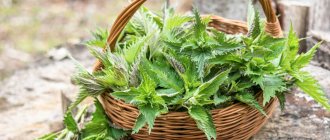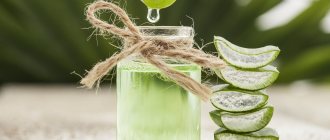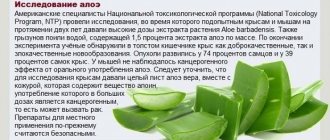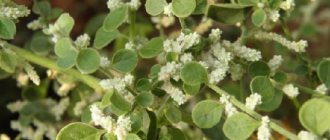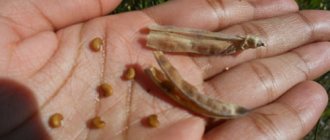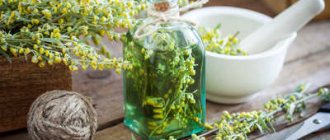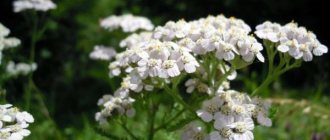Description
Aloe arborescens (genus Aloe) is one of the representatives of the Xanthorrhoeaceae family, known to most people exclusively as Agave, so nicknamed for its rare flowering in cultivation. Being native to South Africa and preferring rocky soils, this species is quite successfully cultivated in our apartments.
An evergreen succulent, Aloe arborescens has a fibrous root system. It is distinguished by long (about 40 cm) juicy, fleshy leaves, with small teeth running along the edges. The leaf, colored green-bluish, sometimes with a bluish tint, is somewhat concave on the outside. In the upper part of the plant, the leaves form a dense rosette, tightly enveloping the stem with their bases.
Drooping tubular flowers of orange color are collected in a lush racemose inflorescence, which bears a long peduncle. When grown at home, it is almost impossible to see this species bloom, but in natural conditions it is a winter-flowering plant. Succulents also usually do not produce fruits in cultivation.
Aloe arborescens is propagated vegetatively - by children growing from the trunk and by the tips of shoots.
Growing
Elements of cultivation. It has been cultivated in the humid subtropics of Transcaucasia since the 40s of the 19th century as an annual transplant crop or a perennial crop in closed ground (in greenhouses, in glazed ground sheds). When cultivated in Georgia, cuttings are rooted in August-September in greenhouses. After 1-1.5 years in the spring, the rooted seedlings are planted in a nursery for growing; in the fall, the seedlings are transferred to closed ground, and the following spring they are planted on industrial plantations. When transplanting into open ground, they are placed according to the 70×30 or 70×50 cm pattern. Before planting, the roots are dipped in manure-clay mash. Leaves are harvested (in October - November) that have reached a length of at least 15 cm. During the season, the collection is repeated up to 15 times. The plantations are used for 5 years; in the last year of the crop, all leaves are cut off for raw materials, and the tops of the plants are taken for rooting. In indoor and greenhouse conditions, propagation can be carried out all year round. Before planting, the cuttings are dried for several days, and then rooted in sand and planted in a mixture of turf, leaf, humus soil and sand, taken in equal proportions.
Agricultural technology
Aloe does not tolerate frost. It is popularly called agave and grown as an indoor flower.
Reproduction
Propagated by rooting side shoots in August - September, using a mixture of soil, humus and sand in a ratio of 3: 1: 0.5. In greenhouses, full-fledged seedlings develop in 1-1.5 years. When transplanting into open ground, it is placed according to a 70X30 or 70X50 cm pattern. Before planting, the roots are dipped in a manure-clay mash.
Plant parts used
To obtain juice, in which all the beneficial properties of the plant are concentrated, you should use fresh lower and middle leaves of 3-4-year-old Aloe arborescens. They need to be cut off directly at the base of the trunk; the frequency of collection is several times a year. The best time of year to obtain a quality product is summer, although medicinal raw materials can be obtained from cultivated plants in winter.
The finished leaves are cut into small pieces, and the juice is squeezed through cheesecloth, which is consumed immediately or, for the purpose of long-term storage, an alcohol tincture is made from Aloe arborescens.
How to grow Agave or Aloe arborescens at home
Aloe arborescens is an easy-to-care plant that usually poses few problems when grown. As already mentioned, this succulent is famous for the fact that it can perfectly adapt to different climatic conditions and can grow well in the house. But still, this is an exotic plant and some conditions in caring for the flower must be observed. Let's describe them in more detail.
The soil
Although the flower is not picky about the composition of the soil, it is better to plant it in light, well-drained soil with slightly acidic acidity (5-6 pH).
It is preferable to use soil mixture for cacti and succulents. If you don't have one, you can make your own by mixing equal parts coarse sand, perlite and regular soil.
Pot
Like other succulent plants, Agave should be planted in a container with a drainage hole. This flower grows quickly and should be given a pot appropriate to its growth. To freely accommodate flower roots that do not grow deep, use a wide container. A layer of drainage should be placed at the bottom of the container.
Light
This plant is suitable for a windowsill with indirect sunlight. It needs light shade from the sun, but grows well in full sun. The color of the leaves will depend on the amount of sunlight the plant receives, ranging from dull green to yellow-green or bluish-green.
Temperature
Aloe arborescens prefers mild to hot climates, but does not like cold.
The ideal temperature for growing the plant is around 20-25 °C. Can withstand lower temperatures from -3 to 10°C.
Watering
Water the flower regularly in the summer, but try not to over-water it. Wait until the soil dries out before watering again. If any remaining water leaks from the pot onto the saucer, be sure to drain it. In winter, reduce the frequency of watering to 2 times a month.
If Aloe Arborescens is grown for medicinal purposes, it is recommended not to water 7-8 days before cutting the leaves so that the active ingredients in the leaf juice are more concentrated.
Fertilizer
Agave does not require large amounts of fertilizer. For houseplants, it is enough to add diluted liquid fertilizer about once a month. There is no need to feed in winter.
Transfer
Aloe vera grows slowly at home, but over time it also requires a larger pot. After making sure that the flower has already outgrown its container, replant it in the spring. Provide him with a potty one size larger than the previous one. Prepare the soil mixture described above. Make sure the container has a drainage hole.
Water the plant well, this will make it easier to remove from the pot. If you have trouble getting the plant out, try running a blade around the edge of the pot and gently tapping the sides to loosen the soil.
How to transplant a succulent can be found in our article.
Do not water Agave for the first few days after transplantation - moisturizing damaged roots during the procedure increases the likelihood of them rotting. Wait a few days and water lightly the first couple of times.
You can learn more about transplanting succulents from this video.
Ways to use aloe
Internal:
Gastritis, enteritis, constipation - take freshly squeezed aloe juice before meals, 1 teaspoon 2-3 times a day. Duration of treatment is from three weeks to two months.
Irregular stool - 150 g. Grind the fresh leaves (cut off the side spines first), pour in hot, but not boiling honey (300 g) and leave for 24 hours. 5–10 gr. Take the resulting mixture warm in the morning on an empty stomach.
Exhaustion, low immunity - mix 100 grams of juice with chopped walnuts (500 grams), honey (300 grams) and lemon juice (3-4 fruits). Take the resulting mixture 3 times a day, 1 teaspoon half an hour before meals.
External:
Burns, trophic ulcers, abscesses, insect bites - lotions of 1-2 teaspoons of juice, as well as irrigation of inflamed areas of the skin.
Acute rhinitis - 5-8 drops in each nostril 3 times a day with a 5-hour interval between procedures.
Chemical composition
Chemical composition. Fresh leaves and juice of the plant contain enzymes, vitamins, and phytoncides. The following have been isolated from aloe leaves: aloin, nataloin, rabarberone, homonataloin, emodin, resinous substances and traces of essential oils.
The leaves contain: ash - 17.68%; macroelements (mg/g): K - 28.5, Ca -79.1, Md - 17.4, Fe - 0.32; microelements (CBN): Mn - 0.38, Cu - 1.10, Zn - 2.75, Co - 0.04, Cr - 0.08, A1
- - 0.09, Ba - 14.90, Se - 11.90, Ni - 0.45, Sr - 17.64, Pb - 0.22, I
- - 0.10, Li - 162.00. B - 94.00 mcg/g. Mo, Cd, V, Au, Br were not detected. Concentrates Ca, Mg, Cu, Zn, Se, Li, Ba, especially Ca, Zn, Se, Li. Can accumulate Mn, Cu.
Active ingredients
Fresh leaves and juice contain anthraglycosides - aloin, nataloin, rabarberone, emodin, resinous substances and traces of essential oils. They contain small amounts of enzymes, vitamins and phytoncides.
Nuances of culture propagation
When growing aloe, sooner or later the question of its reproduction arises. There are the following ways to get a new plant:
- Using cuttings.
- Radical shoots.
- Seeds.
- Upper shoots.
Cuttings, pruning top shoots and root shoots are the simplest options if the question is how to grow aloe quickly. Propagation by seeds is suitable only for the most patient gardeners.
Features of care
Experienced gardeners share their secrets for growing aloe vera:
- Fertilize plants from early spring through fall with a complete fertilizer for succulents or cacti every two weeks.
- In winter, stop feeding and provide the plant with peace and rest. Do not replant aloe and try to water it less often.
- In autumn, in preparation for the dormant period, prune the plant, removing dry, dull and diseased leaves.
Proper watering
Aloe grows best with moderate watering. You should be guided by the drying of the top layer of soil in the pot. A large amount of liquid can lead to rotting of the roots. It is also not recommended to spray the plant frequently.
Plant nutrition
To grow aloe big and healthy, you need to feed the plant regularly. Complex fertilizers for succulents or cacti are suitable for this. The favorable time for feeding lasts from March to October. You should not apply fertilizer immediately after transplanting aloe, as the plant needs time to cope with stress and settle into the new pot.
Pest Control
The fleshy, thick, juicy leaves of aloe attract many insect pests. Let's list the main ones:
- Scale insects are small hemipteran sucking pests. Getting rid of them is simple - just wash the plant with soapy water.
- Mealybug. It leaves the attractive plant after washing with garlic tincture.
How to grow aloe vera and protect it from pests? To do this, regularly inspect it and carry out preventive treatments with insecticides Intavir and Fufanon.
Possible problems with aloe
If the conditions for growing aloe vera do not meet the needs of the plant, then it begins to hurt. Main symptoms of diseases and their causes:
- Curling of leaves. This happens due to too dry and dusty air. It is recommended to wipe them regularly with a damp cloth.
- The leaves turn yellow and soften. Moderate the amount of liquid and make sure it is always at room temperature.
- The tips of the leaves dry out. This is a sign that it is time to replant the aloe, as the roots do not have enough space in the pot and nutrients in the soil.
